Top Tips and Best Practices for Digitizing
the Customer Experience



When customers visit a company’s website in 2023, they arrive with a set of expectations: they expect information to be easily accessible and the site easy to use.
A positive customer experience is no longer a differentiator—it’s now the standard.
Make the most of modern tools and strategies to guarantee your customers have an optimal experience with your brand.
In this article, you’ll learn what digital customer experience looks like and why it’s important. We’ll also explore the best tools for improving customer satisfaction and loyalty.
The digital customer experience refers to all of the online or digital interactions a customer has with your brand. This could include subscribing to your email list, using your mobile app, or making a purchase from your online store.
Digitizing your customer experience means migrating any existing tools and processes to a digital medium. It can also include the discovery of new tools and processes that help you stay on trend in the CX world.
For example, say you currently require customers to call a customer support phone number. Digitizing this part of your customer experience could involve adding a chatbot or online video chat to your brand’s repertoire of customer service options.
Customer experience (CX) has long been a buzzword in the marketing and customer success industries—but what does it mean, and how does it differ from digital customer experience (DX)?
Customer experience encompasses all touchpoints with your customers and your business, both digital and physical. This could include a customer walking into your storefront or receiving a piece of direct mail advertising. Each process and interaction contributes to their overall impression of your company.
Digital customer experience, on the other hand, refers to the customer’s encounters with your brand on digital touchpoints, like accessing your website, social media profiles, or app. DX often provides the customer with more control and accessibility. It can also save companies time and resources by automating some of the more manual processes.
DX involves analyzing and improving multiple areas of the buyer’s journey, such as the company’s reachability, service convenience, purchase convenience, ease of use, channel flexibility, and personalization.
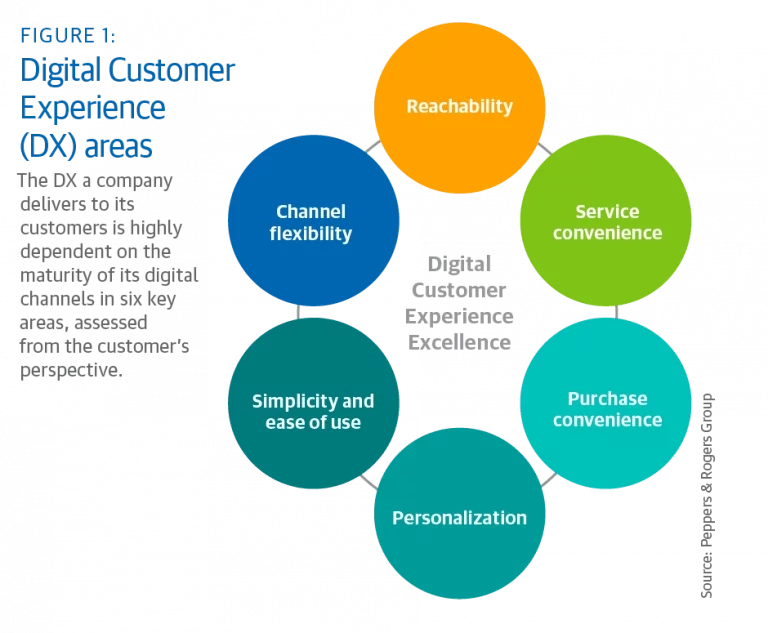
It’s important to understand that your customers don’t see the distinction between CX and DX. They’re simply paying attention to the ways they can interact with your business and evaluating how convenient it is for them.
Since so many processes are digital now, customers expect an online option. They’ll become frustrated when their only method of contact with your business is via an analog method like a phone call to a faceless sales team.
Ensure your DX is up to snuff and your customers can easily work with your business in the ways that are most convenient to them.
Since the turn of the century, many businesses have undergone a digital transformation. They’ve moved internal processes like data tracking and analysis online. However, they left some customer-facing steps offline, like offering a troubleshooting manual instead of video support.
We’ve already mentioned that customers now expect digital options at each stage of their journey. Let’s walk through a few of the key benefits to explain why digitizing your customer experience is so critical in 2023.
According to a 2022 Salesforce study, nearly nine out of 10 customers agree that the experience a company provides is just as important as its products or services.
Not only do you need to ensure your products and services are stellar to ensure customer satisfaction, but your customer experience needs to be top notch as well.

You might have an outstanding new service to offer customers. But if it’s difficult to get in contact with your company, or if customers feel left in the dark after purchase, they won’t be back for more and they won’t share your brand with their friends.
Digitizing the customer experience places you in all of the right channels to create a cohesive and enjoyable interaction with your brand.
A better customer experience means more sales. Companies using multiple channels to connect with their customers received nearly 500% more orders than companies using a single channel.

By creating a well-rounded CX strategy that places you at all the most important touchpoints—digital and physical—you can easily increase overall sales.
Being where your customers are and ensuring a positive experience at every touchpoint can lengthen customer relationships. Salesforce found that 94% of customers say a positive customer experience makes them more likely to make another purchase.
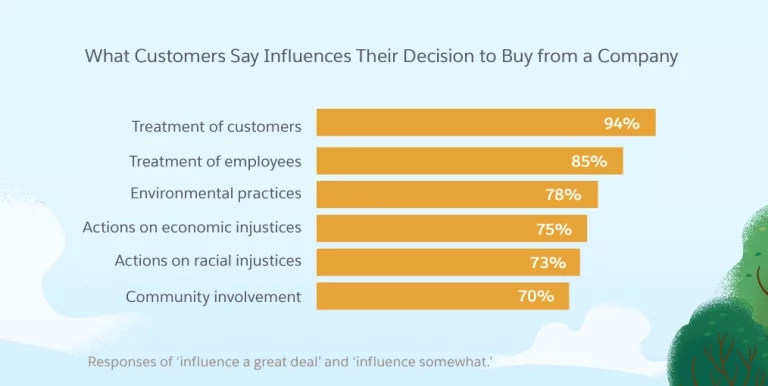
Attracting new customers is important, but reducing churn and retaining customers is also crucial for growth. Keep your customers coming back by improving their experience.
To create that stand-out experience in 2023, you’ll need to move it online.
The first step in digitizing the customer experience is creating a DX strategy. A DX strategy helps ensure that all customer touchpoints work together to create a positive experience.
It also helps you prioritize tasks and allocate the proper resources when building a new digital arm of your business.
Follow these tips to design a DX strategy that best meets your customers on all the right channels.
A user persona (also known as a buyer or customer persona) is an archetype of your target audience. Some brands may even have multiple user personas if they target different audiences.
For example, an educational software may target both educators and students, and would likely have different customer touchpoints and messaging for each segment of their audience.
Creating a user persona provides you with a fictional representation of who your target customer is. It then becomes much easier to create a strategy based on the digital channels that your specific customers will actually use.
A persona will include information about your customer’s demographics, pain points, buying patterns, motivations, and other pertinent customer data.
To align all departments, you can then combine it all into a visual design like the example below.
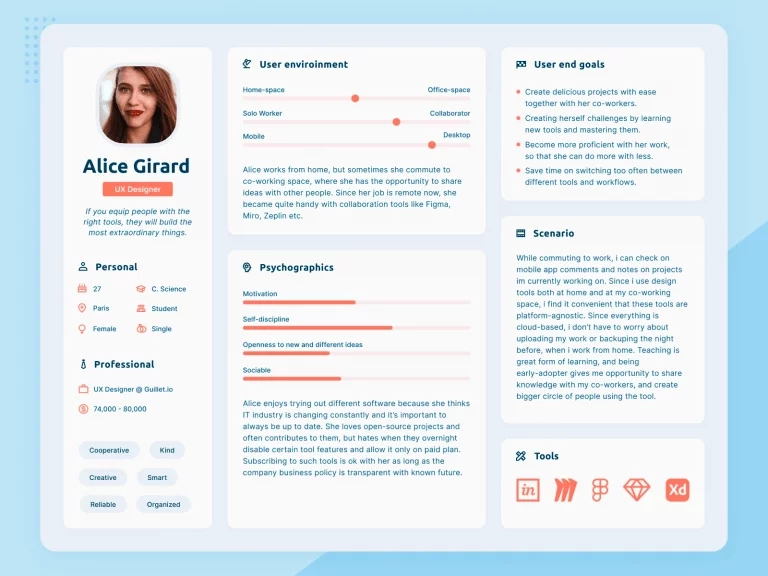
Source: Dribbble
However, it’s not enough to simply guess what your user persona is; you’ll need a data-led profile based on actual customers.
You can gather this data through channels like:
Once you’ve compiled a solid profile for each segment of your target audience, you can finalize your user persona. Use this to determine the right channels to be on, what type of messaging to use on each channel, and how your audience prefers to interact with your brand.
Creating an omnichannel experience means that your customers have multiple outlets in which to interact with your brand. These outlets may include your website, app, social media, email, or video.
An omnichannel experience is more advanced than a multichannel experience. Omnichannel marketing ensures all channels also communicate with each other.

Source: Pitcher
For example, in an omnichannel experience, users can access order information and other data from the website or app, as well as their desktop or mobile browser.
It also ensures that your customer support team can access customer information anytime they need to. This way, if a customer needs to reach out about an order, your team can easily pull up that information regardless of if they’ve reached out via phone, email, live chat, or video chat.
Amazon Prime is a great example of an omnichannel customer experience. Whether they’re signed into the website on their desktop computer or mobile app, users are able to access the exact same order information.
Creating personalized experiences needs to be a key part of your CX strategy. Two-thirds of consumers expect companies to understand their individual needs and expectations, and personalization is a major part of this.
Where meta tags using the customer’s name used to be impressive, today it’s an expectation. To really provide a standout customer experience, you need to tailor the customer journey to individual customer needs.
It sounds complicated, but digital techonology makes it fairly straightforward to accomplish.
Here are some examples of ways to personalize your customer experience that go beyond %firstname%:
One great example of personalization is Spotify Wrapped and the end-of-year “Your Top Songs” playlists. The brand analyzes each listener’s usage of its software and provides an annual recap. It also includes a playlist of the user’s top 100 songs that they can save and refer to again and again.

This personalized experience is fun for users and wildly popular. In December 2020, Spotify saw a 21% increase in downloads and 90 million of their 450 million listeners checked out their Wrapped data. In December 2021, that number went up to 120 million listeners exploring their Spotify Wrapped.
Don’t just meet, but exceed, customer expectations by providing a personalized experience every step of the way.
Your customer is ready to tell you everything you need to know in order to make their experience the best it can possibly be. You just need to provide the right outlets for gathering their feedback.
You can easily do this through mini surveys and forms you send out or place on your website. Here’s an example of an email that pet brand Chewy sent after a customer had to reach out to their support team.
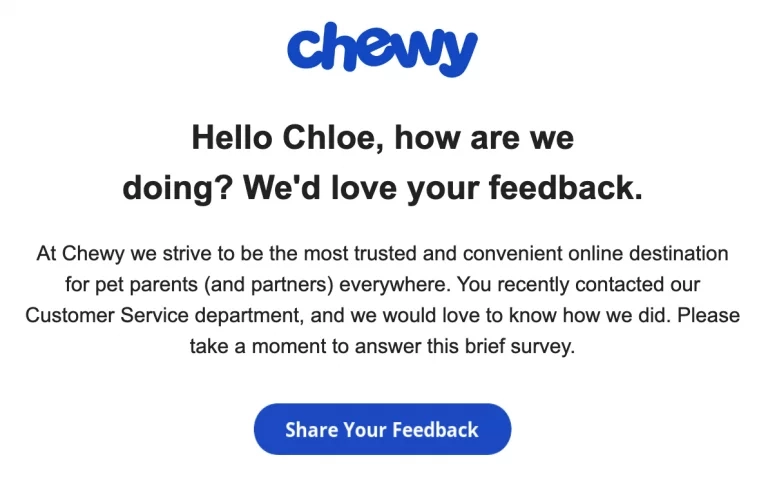
Source: Chewy
It asked how satisfied the customer was with their support interaction, along with specific questions about the customer service agent.
There’s also an open text box at the end for customers to input additional information about their experience. This enables Chewy to gather both quantitative and qualitative data.
They can use the information they’ve gathered to see if they need to improve how they handle support requests.
Other ways to gather customer feedback include:
Once feedback is collected, you can identify the exact places you’re falling short of expectation and begin to prioritize fixes.
Mapping out the customer journey helps you identify each touchpoint your customers have with your brand—both physical and digital.
As you can see in this example below, there may be numerous physical touchpoints in your company that are outdated and in need of a digital transformation:
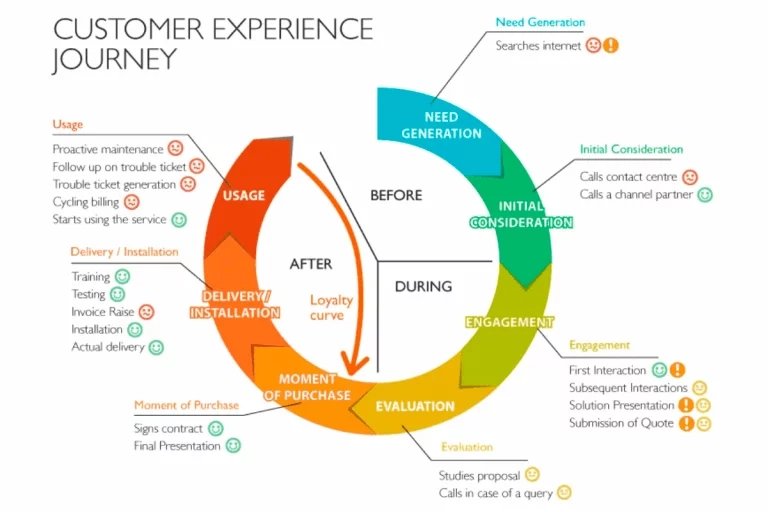
For example, you may identify a need for more options for customers to reach out to the company in the “Initial Consideration” phase (as represented in this digital customer journey).
Additional options could include: requesting a demo on your website, filling out a contact form, subscribing to a newsletter, or even just watching an explainer video.
Examine your existing customer journey to see if there are other touchpoints that may be lacking and in need of improvement. You may even learn that an entire department is in need of a digital transformation strategy.
With your customer feedback, preferences, and current journey map, you’ll be able to see what needs to be prioritized. If your customers revealed that they feel frustrated with the analog troubleshooting manual and would much rather have bespoke support when things go wrong, you’ll know that building out your live support systems will be first on the list.
A knowledge base is one of the best self-service touchpoints you can offer your customers. This is an online library of information that helps both new and existing customers get acquainted with a product or service—without having to get in touch with the contact center.
According to NICE’s 2022 Digital-First Customer Experience report, 81% of consumers want more self-service options. And only 15% of consumers are satisfied with the self-service options available to them.
Your knowledge base will be full of articles showcasing exactly how to use your tool so customers can get the most out of it.
Here’s an example of a knowledge base from marketing software CoSchedule:
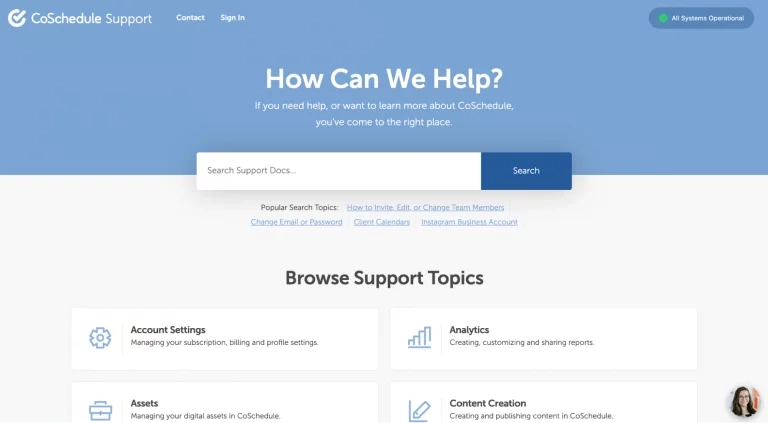
Users can first search for articles on the support home page before deciding if they need to reach out for more help.
Customers can browse topics and learn more about your product without having to wait for a response from your support team.
Learning how your customers access and use your website can help expose issues without having to contact them for feedback. Digital technology such as analytics tools can show you where customers are quickly bouncing, their on-page behavior, and what pages aren’t getting seen at all.
You can also take advantage of heatmap tools like HotJar to see how people use your website or app, what problem areas exist, and ways to optimize the information they most want to see.
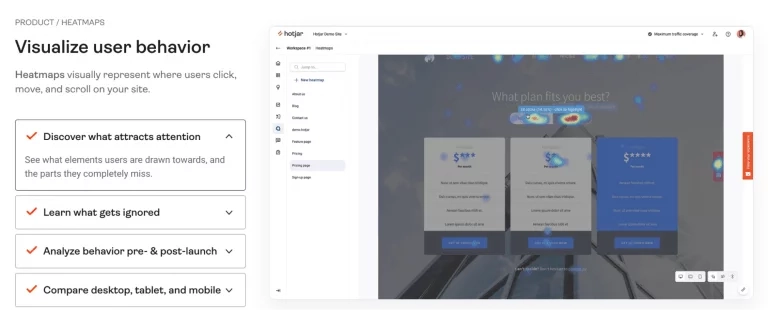
Additional options for gathering data include Simple Analytics, a privacy-first alternative, or an open-source analytics tool like Plausible. Both of these platforms are European-based and don’t rely on cookies.
Tracking user behavior is key to improving your digital CX strategy because it gives you insight into how your customers actively experience your website. Having these insights allow you to step in and fix issues before they get out of control.
It’s important to maintain digital sovereignty for your customers while collecting data. Only use tools that are the most up-to-date with regard to privacy regulations. For instance, when you’re solving a customer’s problem with video, Apizee helps you remain compliant.
Creating a loyalty program is a great way to increase customer retention. In fact, 68% of consumers are inclined to spend more to maximize the rewards they receive.
Loyalty programs are more common with e-commerce and B2C companies, but B2B brands can also take advantage of the strategy.
These programs can take different forms, such as rewarding customers for staying subscribers, or offering perks based on the number of purchases or amount spent.
Sephora is a great example of a B2C company that increases total perks based on how much its customers have spent with the brand.

Computer company Lenovo created its own B2B loyalty program for their business partners to earn rewards for selling Lenovo products. This helped them keep a number of business partners who were considering leaving when the brand first acquired IBM’s X86 server.
Loyalty programs are great ways to improve the overall user experience, and there are a number of digital tools you can use to house rewards data. This way, they’re able to check in to see their points or rewards earned and decide how to use them.
To help you implement each of these best practices, you’ll need the right arsenal of digital tools. Let’s walk through some of the tools you may want to add to your tech stack to digitize your customer experience.
Video communication enables your team to have more human-to-human moments with your customers. It also creates a more personalized approach, building empathy with your company and a stronger rapport.
More than half of all companies surveyed during the CX Metricast 2022 study found that video communication enabled them to build better relationships with customers. Video also helped make interactions more efficient by solving problems faster.
You can use video communication for your sales calls, customer service, visual collaboration, and more.
With Apizee, your customer success team can easily assist customers remotely via video communication. Not only does this give your brand a face, it streamlines assistance and makes it easier for your agents to help.
Apizee can also be used to share sales presentations remotely, join video conference calls, diagnose problems and aid in fixing them, or serve as yet another digital touchpoint in the customer journey. Learn more about how Apizee can help you improve your customer loyalty.
Live chat can be offered alongside or in lieu of video communication. This is a great choice for customer service, as it provides real-time communication while also catering to younger generations’ dislike of phone calls.
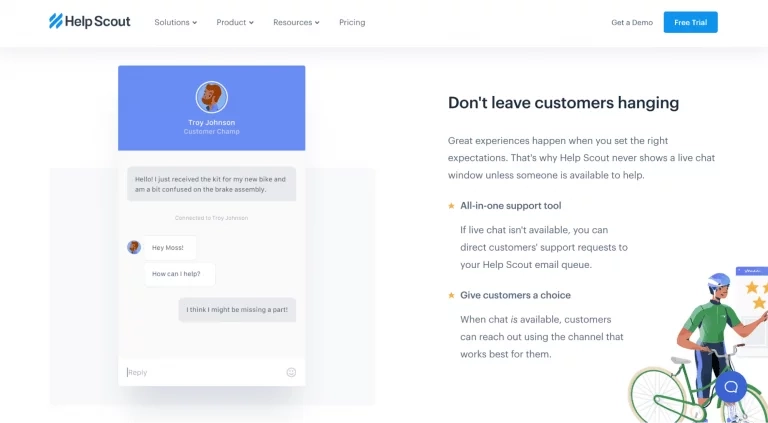
Help Scout is a live chat tool that can connect agents directly to customers in real-time and also direct users to knowledge base articles that may help fix their problem. This solves a two-in-one problem by allowing customers to both contact support when they need it, but also try a self-service option first.
Of course, if customers still need bespoke support, you can offer video solutions detailed above.
Use a chatbot on your website or for social media direct messages to help automate certain conversations before escalating them to an agent, if need be. Chatbots can also be used to answer FAQs, make purchases, navigate your website, refer customers to knowledge base articles, and more.

Userlike is a chatbot tool that can be used for marketing, sales, support, and more. Set up automated answers available on desktop or mobile devices (both apps and SMS) that can help your customers get more done without having to speak to a representative.
Drift is another option for automated messaging and support, offering dozens of native integrations.
User tracking tools can help you create a customer-centric experience. Customer relationship management software (CRM) is useful for monitoring the customer journey and keeping track of important customer data that’s key for personalization.
When used across the organization, user-tracking tools like a CRM pool all relevant information about contacts into one place, such as their contact history with the company and how they interact with your website.
Pipedrive is a CRM your team can use to keeps track of your user behavior and how they’ve moved through your sales and marketing funnel:
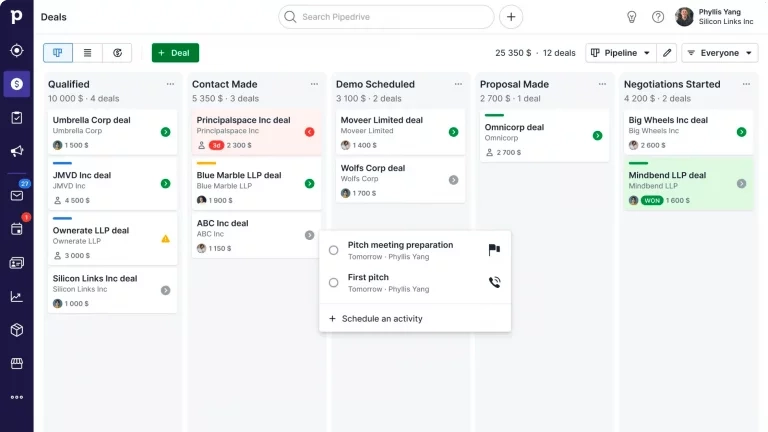
Salesforce continues to be an industry leader for CRM integration across multiple platforms, and HubSpot is another popular option that even offers a free version.
Use analytics tools to your advantage in order to keep an eye on your most popular pages, blog posts, products, and more. You can also monitor your digital presence and its performance to make sure you’re meeting your customers at the right places.
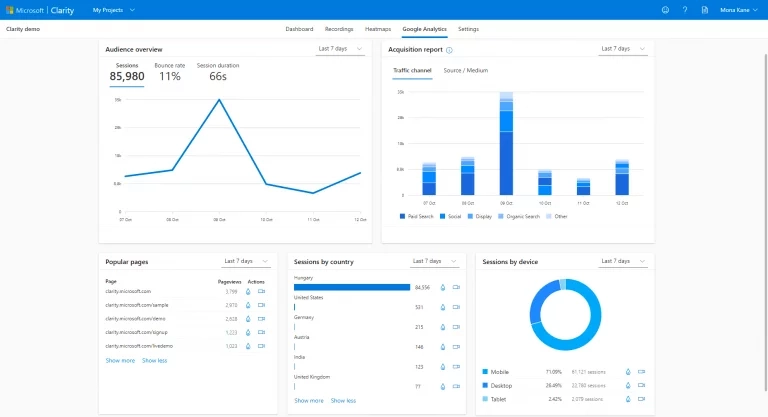
Source: Microsoft
When it comes to handling data, make sure your company remains fully compliant with all privacy legislation, such as the General Data Protection Regulation (GDPR).
For instance, Google Analytics is the current industry leader, but many are starting to question their usage of it.
There are many Google Analytics alternatives that are up-to-date with privacy regulations. Your team can still gather insights like pageviews, landing pages, customer paths, and more—all while handling data responsibly.
There are endless tasks along the customer journey that can be automated: sending customer service tickets to agents, creating cart abandonment emails, sending auto-responders when your team is overwhelmed with inquiries, and more. Automation tools can help make communication more efficient, even when your team isn’t necessarily available.
Zapier is one of the top automation tools as it allows users to connect a variety of tools together to create automated tasks. For example, you could connect Help Scout to your project management software to create tasks from customer support requests:
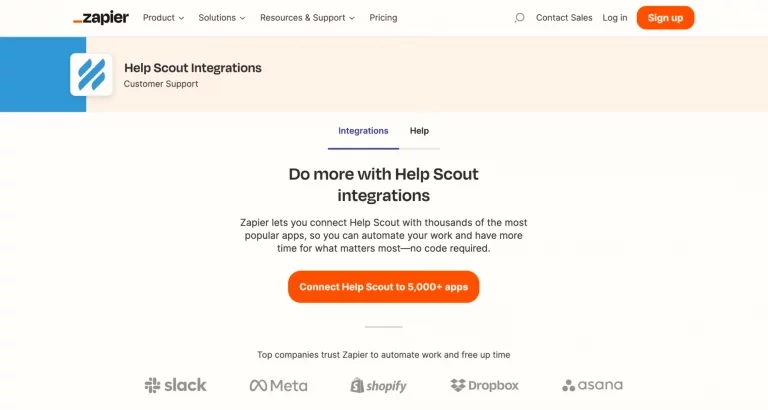
Start incorporating the right tactics and tools into your digital customer experience strategy. By personalizing the customer journey and working to increase customer loyalty and retention, you’ll be able to provide a consistent experience for every audience member.
And to help you start personalizing your digital communication via video, Apizee is here. Set up your own premium customer relationship channel today. Contact us to learn more.
Explore key findings from the Genesys State of Customer Experience report. Learn how AI, omnichannel strategies, and video chat are transforming CX and enhancing customer satisf...
The State of Customer Experience report by Genesys : Key Insights and Trends
27 Mar 2025
Despite AI and automation, customers still prefer to speak to a human for support. Discover why human interaction remains essential for great customer service.
Why Customers Still Want to Speak to a Human in Customer Service
17 Mar 2025
Discover the top customer experience influencers in Europe, shaping the future of CX and customer service.
Top 100 Customer Experience Influencers to follow
10 Mar 2025
Interested in our solutions?